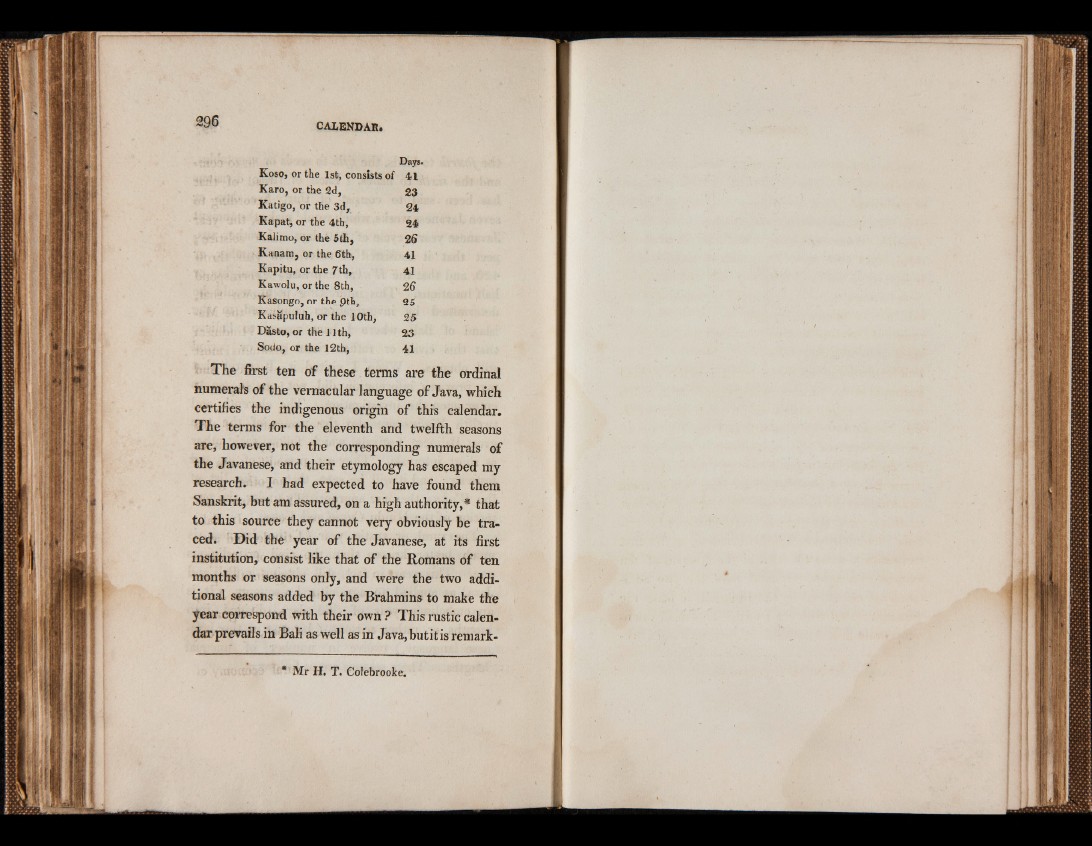
Koso, or the 1st, consists of
Days.
41
Karo, or the 2d, 23
Katigo, or the 3d, 24
Kapat, or the 4th, 24
Kalimo, or the 5th, 26
Kitnam, or the 6th, 41
Kapitu, or the 7th, 41
Kawolu, or the 8th, 26
Kasongo, or the pth, 25
Kasapuluh, or the 10th, 25
Dâsto, or the 11th, 23
Sodo, or the 12th, 41
The first ten of these terms are the ordinal
numerals of the vernacular language of Java, which
certifies the indigenous origin of this calendar.
The terms for the eleventh and twelfth seasons
are, however, not the corresponding numerals of
the Javanese, and their etymology has escaped my
research. I had expected to have found them
Sanskrit, but am assured, on a high authority,* that
to this source they cannot very obviously be traced.
Did the year of the Javanese, at its first
institution, consist like that of the Romans of ten
months or seasons only, and were the two additional
seasons added by the Brahmins to make the
year correspond with their own ? This rustic calendar
prevails in Bali as well as in Java, butitis remark*
Mr H. T. Colebrooke.